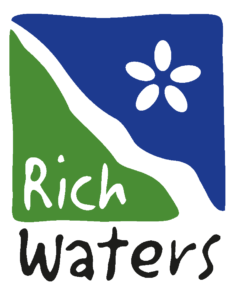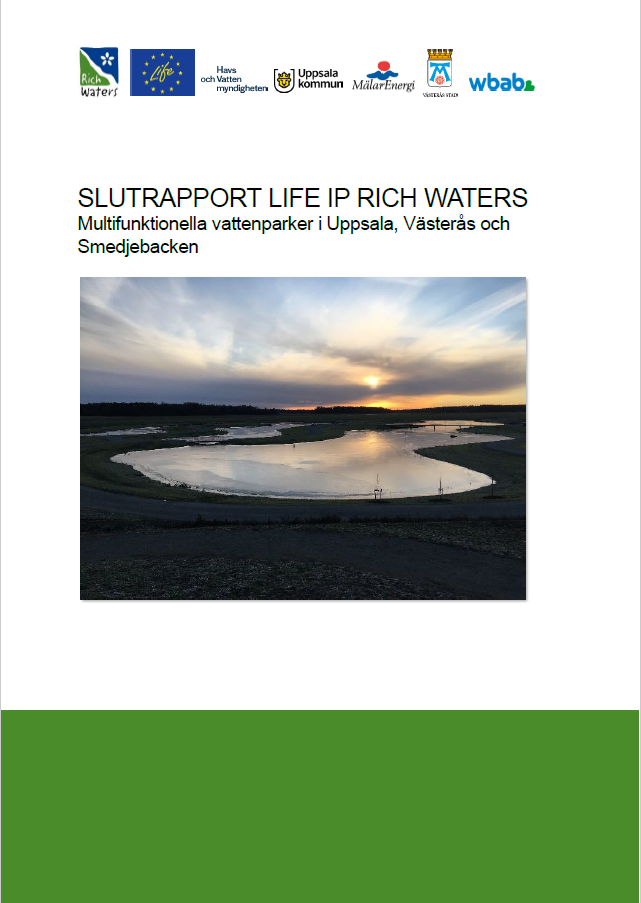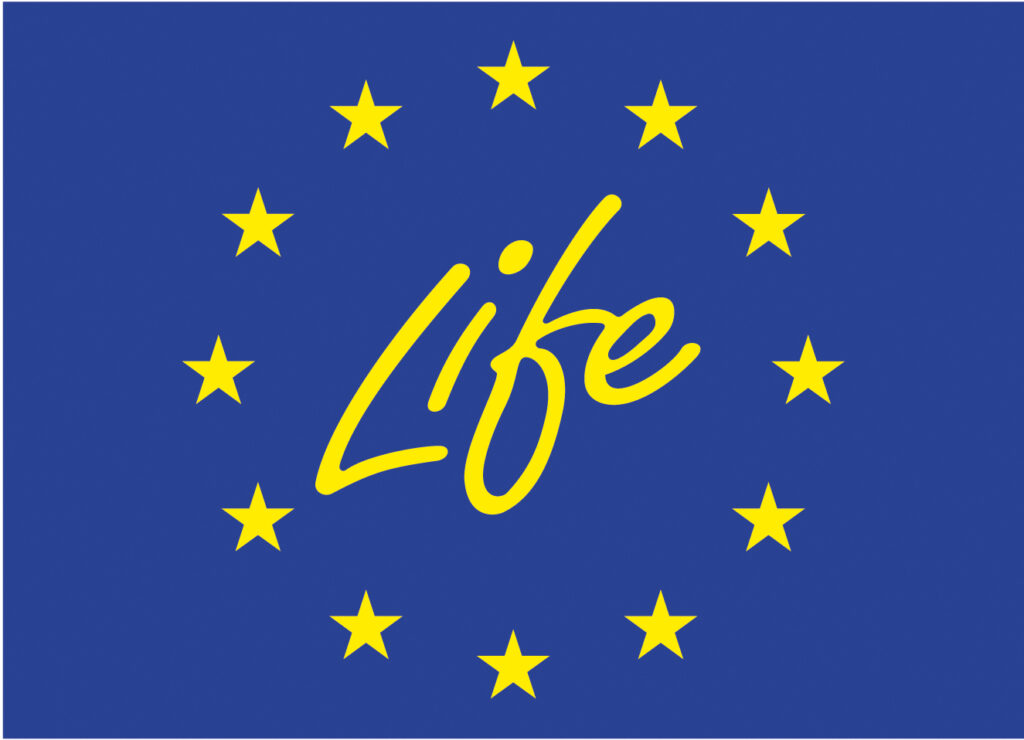Summary
The construction of water parks is part of action C10 – Multifunctional water parks and has been carried out during the period January 2017 to June 2024 within the EU project LIFE IP Rich Waters. Partners to action C10 were Uppsala Municipality, City of Västerås, Mälarenergi AB (Västerås City’s water and wastewater company) and WBAB (WessmanBarken Vatten & Återvinning AB) in Smedjebacken. The goal of the action was to establish a multifunctional water park in each municipality and thereby improve the water quality in the lakes that receive the emissions. The water parks will also be areas for recreation and biodiversity, as well as increase knowledge and inspire others who wants to take similar measures.
This report is aimed at municipalities or other stakeholders who are planning to carry out similar projects. The report replaces the previous interim report, which dealt with the preparation and construction parts of the action. This report summarises the work steps, decisions and positions taken before and during the construction of each water park and thereafter also a description of operation, follow-up and results. The report also contains information about organisation, budget and time consumption and can provide an overview of what issues you may encounter in this type of project and lessons learned during the work.
The conditions at the sites and the needs for water treatment in each municipality differed and the water parks therefore look different in terms of size, shape and functions. The permit process has also been different for the different water parks. This and other parts of planning and construction are described under each municipality (Uppsala, Västerås and Smedjebacken) in this report.
The construction of the water parks has in all three cases been preceded by a feasibility study based on an already identified need for additional water treatment. In some cases, the solutions that were later developed have differed significantly from those proposed in the feasibility study.
The construction of the three water parks in Uppsala, Västerås and Smedjebacken has now been completed. The water park in Smedjebacken was completed in 2023, while the water parks in Uppsala and Västerås were taken into use in the autumn of 2021.
In all cases, the budget for the construction of the water parks has been exceeded. The time consumption has also been greater than expected as more or less unforeseen issues during the project have affected the time and resources required.
Since the construction has taken place at different times, the follow-up has progressed at different stages. This is also described in each municipality’s part of the report. Follow-up of water treatment has been carried out to varying degrees in all water parks. There is a clear water-purifying effect in the water parks in Uppsala and Smedjebacken. In Västerås, the results are difficult to interpret and the flow measurement did not work as planned, but reduction of pollution levels occurs in most cases.
Based on the studies that have been carried out, biodiversity in Uppsala and Västerås water parks is assessed to have increased significantly. Among other things, plants, benthic fauna, insects on land and birds have been studied. In Smedjebacken, biodiversity is also perceived to have increased.
Socio-economic effects of the construction of the water parks have been assessed with the help of a survey study in Uppsala and Västerås and show that such effects have been achieved to varying degrees.
The ecosystem services that the water parks in Västerås and Uppsala contribute to have been investigated in 2023 within the framework of a degree project. The ecosystem services that the project planned to contribute to have increased, but other ecosystem services have also increased.
In terms of the total pollution load on our waters, the purification effect that the water parks entail is small, but still locally important, and by implementing several similar projects, a greater effect can be achieved.
The communication efforts carried out within the project are considered to have reached out to both the general public and also to other actors who can see the water parks as inspiring examples of multifunctional measures. Through the study visits that have been carried out, over 1000 people have been reached. A joint seminar/webinar was held in the spring of 2024 so that other stakeholders could take part in the experiences. The seminar/webinar was held in a digital studio and about 50 people from municipalities and other actors from different parts of Sweden participated, and it has also had over 100 digital tours afterwards.



